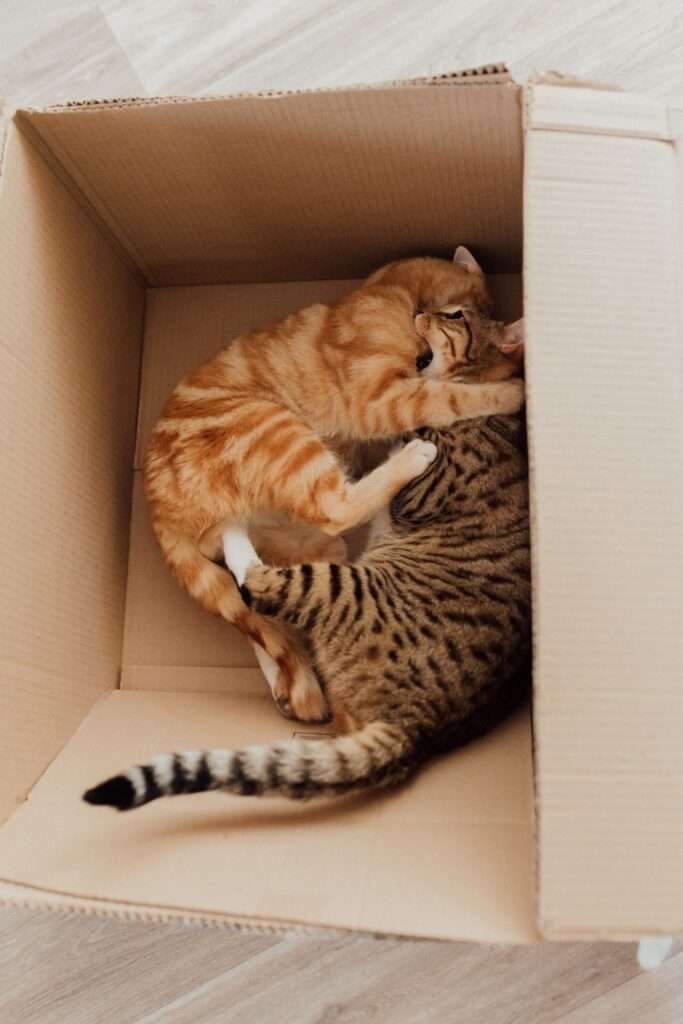How Do Cats Have Sex? Exploring the Intricacies of Feline Mating
Cats are fascinating creatures, with their sleek and mysterious demeanor, and their unique way of communicating with us. One aspect of cat behavior that many people find intriguing is their mating habits. Understanding how cats mate can help cat owners and breeders make informed decisions about their pets and promote responsible breeding practices.
At BarkLikeMeow, we are committed to equipping pet owners with the knowledge necessary to provide optimal care for their beloved animals. In this article, we will conduct a thorough examination of cat mating behavior, covering everything from the fundamentals of the mating process and reproductive anatomy to the influence of pheromones.
The Basics of Cat Mating
The mating process for cats is a complex and fascinating series of behaviors that starts with attracting a mate and ends with copulation. Before mating, male cats will often engage in courtship behaviors, including vocalizations, marking their territory with urine, and presenting the female with gifts of food.
Once the male has successfully attracted a female, copulation will typically take place. The reproductive anatomy of male and female cats plays a crucial role in the mating process, with male cats possessing a barbed penis that stimulates ovulation in the female.
Another important factor in cat mating behavior is the role of pheromones. Pheromones are chemical cues utilized by animals to communicate with one another, and they have a considerable impact on cat mating behavior. Male cats will release pheromones to attract a mate, while female cats will release pheromones to signal that they are in heat.
How Do Cats Have Sex
The mating process between cats is a fascinating and complex behavior that is unique to felines. During the feline estrous cycle, the female cat will attract male cats through a combination of vocalizations and scents. The male cat, or tomcat, will use his sense of smell to locate the female and will approach her with caution.
Once the male is close enough, he will begin to vocalize and rub his head and body against the female to show his interest. The actual mating process between cats is short, lasting only a few seconds to a few minutes.
During mating, the tomcat will use his barbed penis to stimulate the female’s reproductive organs. This barbed structure is believed to be an adaptation that helps the male hold onto the female during mating. After mating, the female may exhibit some aggressive behavior towards the male.
Pregnancy and Birth
If fertilization is successful, the female cat will become pregnant and carry the kittens for an average of 63-65 days. During pregnancy, the mother cat will experience physical changes such as weight gain and enlargement of the mammary glands.
Proper nutrition and veterinary care are essential during this time to ensure a healthy pregnancy and delivery. The birth process for cats is called parturition and typically occurs in three stages.
The first stage involves the mother cat becoming restless and showing signs of discomfort. The second stage involves the actual delivery of the kittens. The mother cat will use her abdominal muscles to push the kittens out one by one. The third stage involves the delivery of the placenta, which is necessary for the kittens’ survival.
Reproduction and the Cat Lifecycle
Female cats go through a reproductive cycle known as estrus, which is often referred to as being “in heat.” During this cycle, the female cat is fertile and ready to mate. It’s important to understand the signs of estrus in female cats so that you can prevent unwanted litters.
Female cats typically go into heat every two to three weeks, and the cycle lasts for about a week. Signs that a female cat is in heat include restlessness, vocalizations, and an increase in affectionate behavior. It’s important to note that unspayed female cats are at a higher risk for developing certain health problems, such as uterine infections and mammary tumors.
Understanding the reproductive lifespan of cats is also crucial for cat owners and breeders. Female cats are typically fertile from around six months of age until they are about ten years old. Male cats can remain fertile for longer, but their reproductive abilities may decline with age.
Timing is essential in cat breeding. Breeding a female cat too early or too late in her estrus cycle can result in unsuccessful mating and a failure to conceive. Additionally, breeders must carefully consider the genetics of both the male and female cats to ensure healthy offspring.
Cat Breeding and Genetics

The genetics of cat breeding is a complex and fascinating topic. Breeders often aim to produce cats with specific physical characteristics, such as a particular coat color or pattern. However, breeding for certain traits can also increase the risk of health problems in the offspring.
Purebred cats are those that have been selectively bred for generations to produce cats with a particular appearance and temperament. Mixed-breed cats, on the other hand, are the result of two different breeds mating.
Breeding cats can be a rewarding experience, but it’s important to approach it responsibly. Breeders must carefully consider the genetics of both the male and female cats to avoid breeding cats with inherited health problems. They must also ensure that they are breeding for the right reasons and not simply to make a profit.
Health Considerations
Reproductive health is an important aspect of feline health. Unfortunately, cats can be susceptible to certain reproductive health issues such as pyometra, a potentially life-threatening infection of the uterus in female cats, and testicular cancer in male cats. Early detection and proper veterinary care are crucial for treating these conditions.
Spaying and neutering cats can also have numerous health benefits. Spaying female cats can greatly reduce their risk of developing pyometra and breast cancer. Neutering male cats can reduce their risk of developing testicular cancer and may also help prevent certain behavioral issues, such as spraying and roaming.
While there are some concerns about the impact of spaying and neutering on a cat’s behavior and health, the benefits often outweigh the risks. It is important to discuss the decision to spay or neuter your cat with a veterinarian to determine the best course of action for your pet.
Spaying and Neutering Your Cat
Spaying and neutering your cat is an essential part of responsible pet ownership. These procedures involve the surgical removal of the reproductive organs in cats, which eliminates the risk of unwanted litters and can provide a number of health benefits.
Spaying your female cat can help prevent uterine infections and mammary tumors, as well as eliminate the risk of unwanted litters. Neutering your male cat can reduce the risk of testicular cancer and eliminate the risk of spraying or marking behavior.
Spaying and neutering also has significant benefits for the wider cat population. Overpopulation is a significant problem in many areas, and spaying and neutering can help reduce the number of cats in shelters and prevent euthanasia.
Conclusion
At BarkLikeMeow, we are committed to promoting responsible pet ownership and the health and welfare of cats. By understanding the mating behavior and reproduction of cats, we can make informed decisions that benefit both individual cats and the wider cat population.
Whether you’re a cat owner, breeder, or simply someone interested in learning more about these fascinating animals, we hope that this guide has provided valuable insights and information. By working together to promote responsible breeding practices and spaying and neutering, we can help ensure a bright future for cats everywhere.
Frequently Asked Questions About Cat Mating
Q: How often do cats mate?
A: Female cats typically go into heat every two to three weeks, but this can vary depending on the individual cat. Male cats can mate multiple times in a day.
Q: Can cats mate with their siblings?
A: Cats can mate with their siblings, but this can increase the risk of genetic health problems in the offspring.
Q: Do cats mate for life?
A: No, cats do not mate for life. They may mate with multiple partners during their reproductive lifespan.
Q: Can cats mate with different breeds?
A: Yes, cats can mate with cats of different breeds, but the offspring will typically be considered mixed-breed cats.
Q: How do cats have intercourse?
A: Male cats mount the female from behind during heat, engaging in a brief copulation. The male’s barbed penis stimulates ovulation in the female. This process is part of a series of mating behaviors exhibited by cats during their reproductive cycle.
Q: How long does the mating process take?
A: The actual act of copulation between cats typically lasts only a few seconds, but the courtship and mating process can take several days.
Q: Why do female cats attack males after mating?
A: Female cats may attack males after mating due to a hormonal reaction that causes discomfort or pain. This is believed to be a defense mechanism to prevent further mating attempts.
Q: Why do cats scream when mating?
A: Cats scream during mating due to the male cat’s barbed penis, which causes pain to the female cat. The screaming is a natural response to the discomfort.
Q: How to stop cats from mating?
A: The most effective way to stop cats from mating is to have them spayed or neutered. This procedure removes the reproductive organs, reducing their sexual drive and preventing them from mating.
Q: How to tell if cat mating was successful?
A: A successful mating can be determined by a few signs. The male cat may bite the female’s neck and hold her in place, while the female cat may yowl or scream. If the mating was successful, the female cat may become pregnant in the following weeks.





